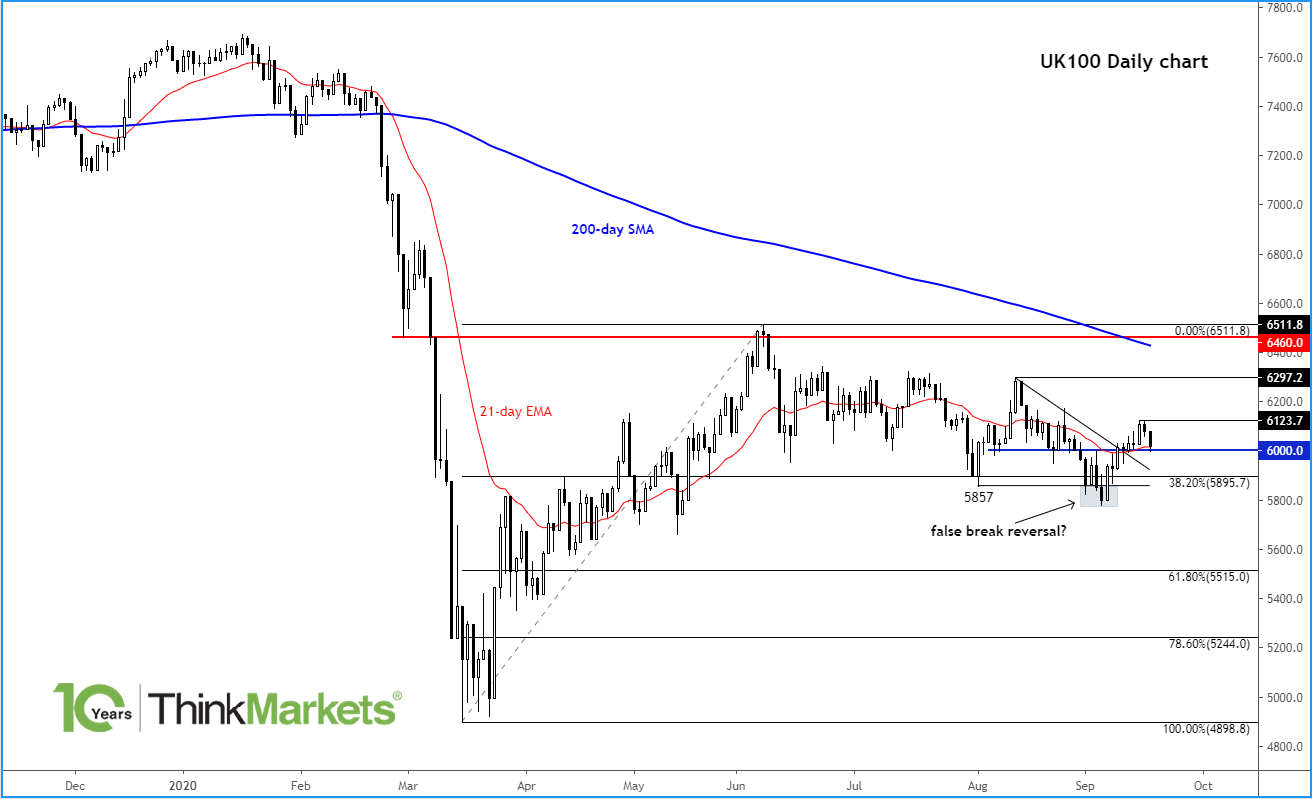Ahead of the BoE’s decision at 12:00 BST, the pound was off its lows with the GBP/USD hovering around 1.2950, while the FTSE was lower, testing key support around 6000. Other European indices and US index futures were also lower, but off their worst levels. Gold fell following a more upbeat FOMC last night, but it was testing key short-term support around $1940 ahead of the BoE decision.
Like the Fed and BoJ, the BoE is expected to make no changes in its £745 billion bond-buying programme or the 0.1% base rate. The decision is due at noon in London.
Investors will be keen to find out whether the vote split will be a unanimous 9-0 or will there be any dissenters at today’s Monetary Policy Committee meeting. Also, the meeting minutes could provide critical insight into future policy changes. In particular, any hints that quantitative easing will be expanded further in November should be positive news for the FTSE. Interest rates are expected to be could be cut to zero or possibly even lower next year.
Brexit uncertainty major headache for BoE
But a lot will depend on the Brexit situation and the BoE will highlight this in the policy statement. So far it looks like the U.K. is heading for a no-deal Brexit with time fast running out. This is providing uncertainty for businesses and households alike. It is not ideal, not when the economy is trying to come out of a historic recession.
Talking about the economy, the rebound from coronavirus lockdowns has been strong, although the speed of recovery has now unsurprisingly faded. With the new surge in virus cases being reported over the past week, there is the possibility that social restrictions could be extended to control the spread of Covid-19, and this could weigh further on the recovery. Meanwhile the end of government support for wages is nearing, which could see a spike in unemployment in the months ahead, given that about 10% of the UK workforce remains on furlough scheme, according to the ONS.
Federal Reserve less pessimistic
So, the BoE will very likely convey a dovish message to the markets, like the Federal Reserve did last night. Policymakers at the Fed signalled rates will remain near zero for at least three years, until the US economy reaches maximum employment and achieve 2% inflation. But the Fed was less pessimistic about growth as it sharply improved its outlook for 2020 GDP to -3.7%, compared with -6.5% in June, as Chairman Jay Powell acknowledged that the recovery has been faster than feared. However, Powell was cautious about being too optimistic and insisted that the path ahead remains “highly uncertain.”
Bank of Japan unchanged
Like the Fed, the Bank of Japan also left interest rates and QE unchanged as expected. Although it noted signs of a gradual economic recovery, it remained cautious given the fact the pandemic is still a major issue for the global economy, on which the export-oriented Japanese economy relies heavily on.
FTSE down but not out
The FTSE was down along with other European indices, but following the recent recovery there was a chance the bulls would step back in – especially if the BoE turns out to be more dovish than expected. The index may have created a
false break reversal pattern when it refused to hold below its old low of 5855/60 in the first week of September. It has since broken a bearish trend line and moved back above the 21-day exponential. So, the technical outlook looks somewhat bullish despite today’s weakness. The index needs to hold support at around 6,000, which was being tested at the time of writing to maintain its short-term bullish bias.

Source: TradingView.com and ThinkMarkets